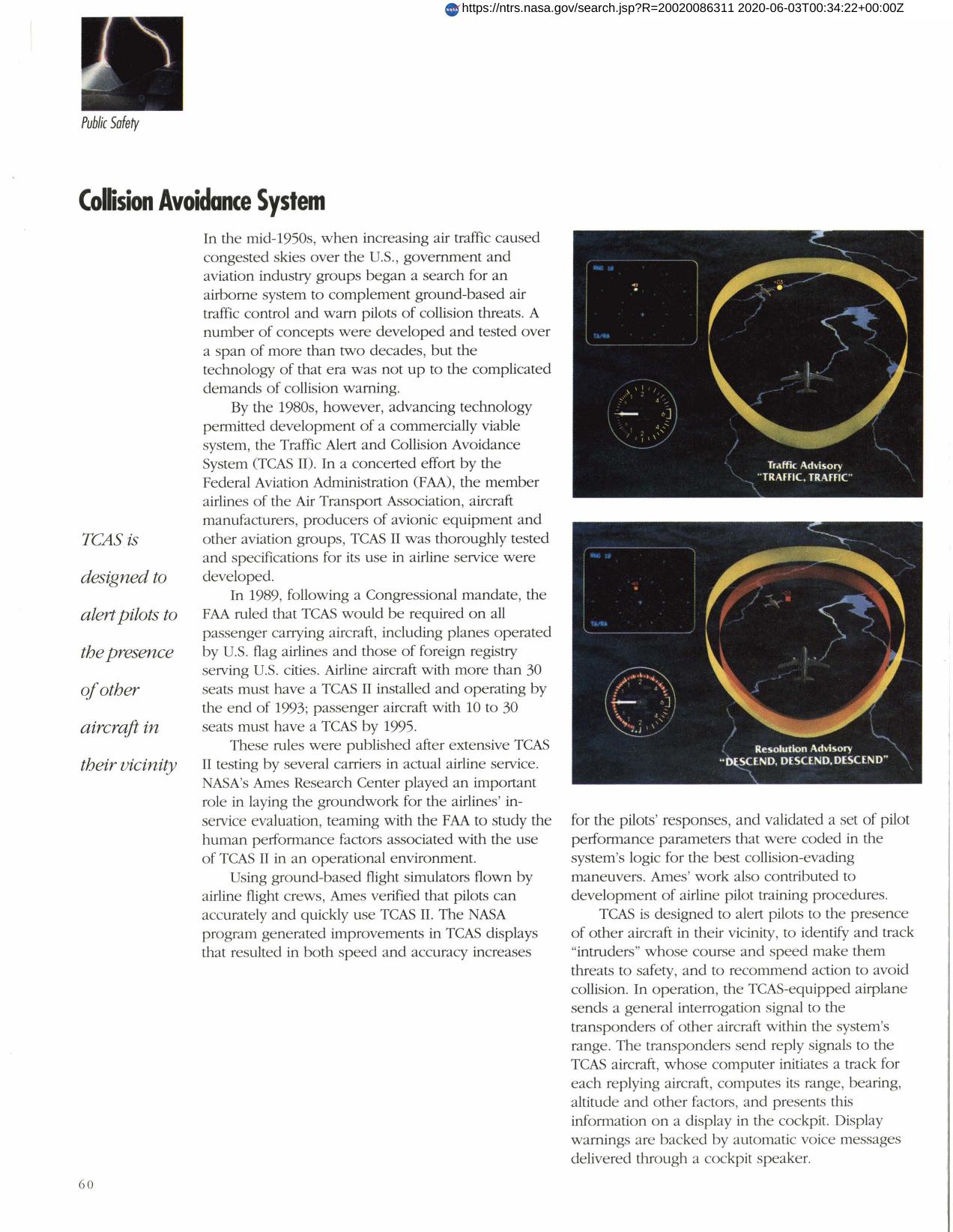
Collision Avoidance System
Ames Research Center teamed with the Federal Aviation Administration (FAA) to study human performance factors associated with the use of the Traffic Alert and Collision Avoidance system (TCAS II) in an operational environment. TCAS is designed to alert pilots of the presence of other aircraft in their vicinity, to identify and track those who could be a threat, and to recommend action to avoid a collision. Ames conducted three laboratory experiments. The first showed that pilots were able to use the TCAS II correctly in the allowable time. The second tested pilots' response to changes in the avoidance advisories, and the third examined pilots' reactions to alternative displays. After a 1989 congressional mandate, the FAA ruled that TCAS would be required on all passenger carrying aircraft (to be phased in completely by 1995).
Full article: http://hdl.handle.net/hdl:2060/20020086311

Collision Avoidance System

Collision Avoidance System













